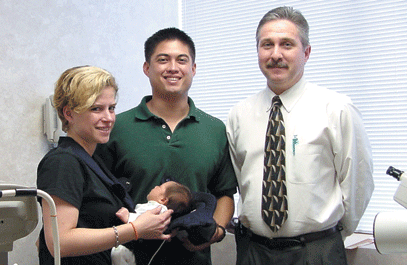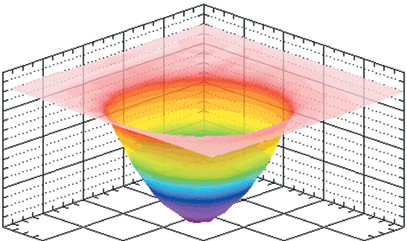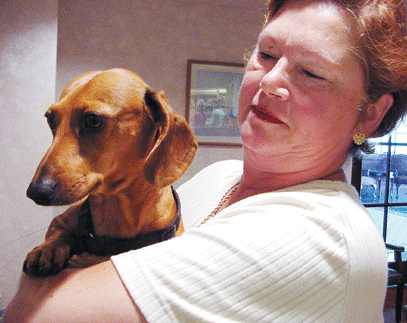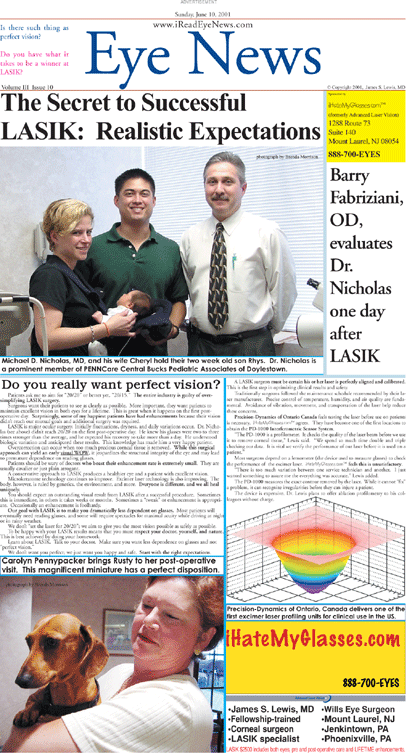Philadelphia / Bucks County LASIK Surgeon – Dr. James S. Lewis
Eye News Volume III Issue 10

The Secret to Successful LASIK: Realistic Expectations

Michael D. Nicholas, MD, and his wife Cheryl hold their two week old son Rhys. Dr. Nicholas is a prominent member of PENNCare Central Bucks Pediatric Associates of Doylestown.
Barry Fabriziani, OD, evaluates Dr. Nicholas one day after LASIK
A LASIK surgeon must be certain his or her laser is perfectly aligned and calibrated. This is the first step in optimizing clinical results and safety.
Traditionally surgeons followed the maintenance schedule recommended by their laser manufacturer. Precise control of temperature, humidity, and air quality are fundamental. Avoidance of vibration, movement, and transportation of the laser help reduce these concerns.
Precision-Dynamics of Ontario Canada feels testing the laser before use on patients is necessary. iHateMyGlasses.com™ agrees. They have become one of the first locations to obtain the PD-1000 Interferometric Sensor System.
“The PD-1000 is a profilometer. It checks the quality of the laser beam before we use it to remove corneal tissue,” Lewis said. “We spend so much time double and triple checking our data. It is vital we verify the performance of our laser before it is used on a patient.”
Most surgeons depend on a lensometer (the device used to measure glasses) to check the performance of the excimer laser. iHateMyGlasses.com™ feels this is unsatisfactory.
“There is too much variation between one service technician and another. I just wanted something to assure me the everything was accurate.” Lewis added.
The PD-1000 measures the exact contour removed by the laser. While it cannot “fix” a problem, it can recognize irregularities before they can injure a patient.
The device is expensive. Dr. Lewis plans to offer ablation profilometry to his colleagues without charge.
Traditionally surgeons followed the maintenance schedule recommended by their laser manufacturer. Precise control of temperature, humidity, and air quality are fundamental. Avoidance of vibration, movement, and transportation of the laser help reduce these concerns.
Precision-Dynamics of Ontario Canada feels testing the laser before use on patients is necessary. iHateMyGlasses.com™ agrees. They have become one of the first locations to obtain the PD-1000 Interferometric Sensor System.
“The PD-1000 is a profilometer. It checks the quality of the laser beam before we use it to remove corneal tissue,” Lewis said. “We spend so much time double and triple checking our data. It is vital we verify the performance of our laser before it is used on a patient.”
Most surgeons depend on a lensometer (the device used to measure glasses) to check the performance of the excimer laser. iHateMyGlasses.com™ feels this is unsatisfactory.
“There is too much variation between one service technician and another. I just wanted something to assure me the everything was accurate.” Lewis added.
The PD-1000 measures the exact contour removed by the laser. While it cannot “fix” a problem, it can recognize irregularities before they can injure a patient.
The device is expensive. Dr. Lewis plans to offer ablation profilometry to his colleagues without charge.
Do you really want perfect vision?
Patients ask me to aim for “20/20” or better yet, “20/15.” The entire industry is guilty of over-simplifying LASIK surgery.
Surgeons want their patients to see as clearly as possible. More important, they want patients to maintain excellent vision in both eyes for a lifetime. This is great when it happens on the first post-operative day. Surprisingly, some of my happiest patients have had enhancements because their vision didn’t reach our mutual goals and additional surgery was required.
LASIK is major ocular surgery. Initially fluctuations, dryness, and daily variations occur. Dr. Nicholas (see above) didn’t reach 20/20 on the first post-operative day. He knew his glasses were two to three times stronger than the average, and he expected his recovery to take more than a day. He understood biologic variation and anticipated these results. This knowledge has made him a very happy patient.
Overcorrection can occur when too much precious corneal tissue is removed. While this surgical approach can yield an early visual WOW, it jeopardizes the structural integrity of the eye and may lead to premature dependence on reading glasses.
Patients should be wary of doctors who boast their enhancement rate is extremely small. They are usually cavalier or just plain arrogant.
A conservative approach to LASIK produces a healthier eye and a patient with excellent vision.
Microkeratome technology continues to improve. Excimer laser technology is also improving. The body, however, is ruled by genetics, the environment, and more. Everyone is different, and we all heal uniquely.
You should expect an outstanding visual result from LASIK after a successful procedure. Sometimes this is immediate, in others it takes weeks or months. Sometimes a “tweak” or enhancement is appropriate. Occasionally an enhancement is foolhardy.
Our goal with LASIK is to make you dramatically less dependent on glasses. Most patients will eventually need reading glasses, and some will require spectacles for maximal acuity while driving at night or in rainy weather.
We don’t “set the laser for 20/20”; we aim to give you the most vision possible as safely as possible.
To be happy with your LASIK results means that you must respect your doctor, yourself, and nature. This is best achieved by doing your homework.
Learn about LASIK. Talk to your doctor. Make sure you want less dependence on glasses and not “perfect vision.”
We don’t want you perfect; we just want you happy and safe. Start with the right expectations.
Surgeons want their patients to see as clearly as possible. More important, they want patients to maintain excellent vision in both eyes for a lifetime. This is great when it happens on the first post-operative day. Surprisingly, some of my happiest patients have had enhancements because their vision didn’t reach our mutual goals and additional surgery was required.
LASIK is major ocular surgery. Initially fluctuations, dryness, and daily variations occur. Dr. Nicholas (see above) didn’t reach 20/20 on the first post-operative day. He knew his glasses were two to three times stronger than the average, and he expected his recovery to take more than a day. He understood biologic variation and anticipated these results. This knowledge has made him a very happy patient.
Overcorrection can occur when too much precious corneal tissue is removed. While this surgical approach can yield an early visual WOW, it jeopardizes the structural integrity of the eye and may lead to premature dependence on reading glasses.
Patients should be wary of doctors who boast their enhancement rate is extremely small. They are usually cavalier or just plain arrogant.
A conservative approach to LASIK produces a healthier eye and a patient with excellent vision.
Microkeratome technology continues to improve. Excimer laser technology is also improving. The body, however, is ruled by genetics, the environment, and more. Everyone is different, and we all heal uniquely.
You should expect an outstanding visual result from LASIK after a successful procedure. Sometimes this is immediate, in others it takes weeks or months. Sometimes a “tweak” or enhancement is appropriate. Occasionally an enhancement is foolhardy.
Our goal with LASIK is to make you dramatically less dependent on glasses. Most patients will eventually need reading glasses, and some will require spectacles for maximal acuity while driving at night or in rainy weather.
We don’t “set the laser for 20/20”; we aim to give you the most vision possible as safely as possible.
To be happy with your LASIK results means that you must respect your doctor, yourself, and nature. This is best achieved by doing your homework.
Learn about LASIK. Talk to your doctor. Make sure you want less dependence on glasses and not “perfect vision.”
We don’t want you perfect; we just want you happy and safe. Start with the right expectations.

Precision-Dynamics of Ontario, Canada delivers one of the first excimer laser profiling units for clinical use in the US.

Carolyn Pennypacker of Phoenixville brings Rusty to her post-operative visit. This magnificent miniature has a perfect disposition.

In order to provide his patients with the best possible vision correction results, Dr. Lewis conducts thorough consultations, during which time he develops individualized treatment plans. This approach has helped him establish a reputation as an outstanding LASIK Philly surgeon. Other procedures Dr. Lewis performs more often include Epi-LASIK in Philadelphia, as well as implantation of Visian ICL.

